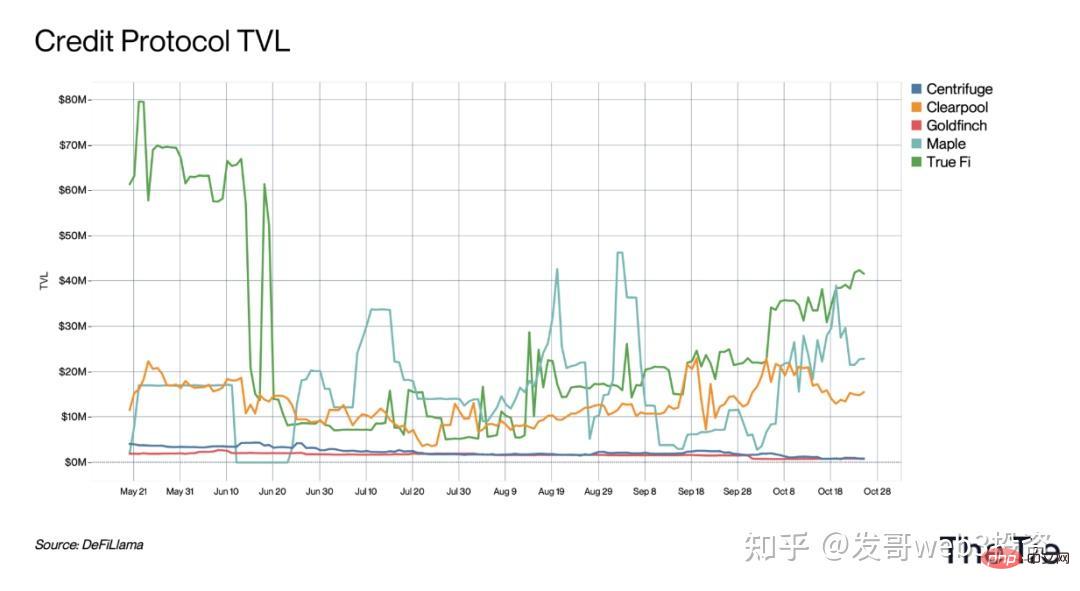Blockchain is a system that operates independently of the real world. Data in the encrypted world is generated on the chain and continues to be used on the chain. Assets in the world outside the chain cannot be used directly on the blockchain.
If DeFi wants to achieve better development, a connection must be established between cryptocurrency and the real world, that is, it needs to be related to assets in the outside world, And Real World Assets (RWA) provide this unique opportunity for DeFi, which lacks returns.
So what exactly is RWA? How to integrate and develop with encryption?
01
What is RWA?
RWA is a Token that can be traded on behalf of real assets on the chain, including ordinary Tokens and NFTs. Real assets include real estate (houses and rental flows), loans, contracts and guarantees, and any High value items that will be used in transactions.
If compared with traditional finance, RWA on-chain is equivalent to capital securitization.
Look to the success of securitization in the 1990s as an example of how regulatory improvements can transform capital formation. Securitization is simply a system for creating, aggregating, storing and spreading risk. By proposing benchmarks (terms, risk, etc.) that assets must meet, we significantly increase liquidity and funding sources. Mortgages, business loans, and consumer loans were institutionalized and deployed through securitization, resulting in more affordable financing for consumers, companies, and homebuyers.
To put it in vernacular, it is better to understand that if the house price is paid in full, many people cannot afford it now, but with a loan, basically most people can afford it.
Thirty years later, on-chain securitization can be said to be much the same; financial markets have not evolved enough to effectively adapt to the Internet. Borrowing costs are higher than they should be due to a network of intermediaries including investment banks, custodians, rating services, service agencies, etc. Most assets cannot be securitized, and international financing markets remain inaccessible to most business owners. In Africa and Asia, basic resources like insurance remain hard to come by.
This begs the question: What does the digital capital market need to do to cross the moat of traditional finance?
So establishing a connection between cryptocurrency and the real world must be the main goal of DeFi. Although the current digital asset market is still small ($1 trillion), the actual asset market is huge (more than $600 trillion). If the encryption industry wants to have an impact on traditional business operations, it must solve the problem of industry value transfer.
02
How does RWA work in the crypto world?
Asset Custody
In view of the proliferation of digital assets and the influx of new institutions, it is extremely important to have a solid institutional custody of digital assets. Over the past few years, there has been a proliferation of permissioned DeFi custody services such as Anchorage Digital and Copper. Some credit protocols, such as Maple, guarantee their own tokens on these permissioned platforms that serve institutions.
All financing and payments are done directly between borrowers, special purpose vehicles and investors and occur on-chain. In the future, the Trust Agent Protocol hopes to be more integrated with the Decentralized Identity (DID) protocol to verify assets. Underwriters will then be integrated as third-party risk assessors rather than existing oracle systems.
Liquidity
Certain tokenized assets, such as real estate deeds, may be highly illiquid. The liquidity of the pool depends on the asset maturity and investor inflows and outflows. If it is an income-based incentive model, it can also stimulate liquidity.
In addition, the protocol can also collaborate with DEX, AMM, and other DeFi applications such as Balancer and Curve to create liquidity.
Trust Generation Protocol
One of the biggest reasons institutions are uneasy about DeFi is the lack of a standardized reputation system, such as credit scoring. DeFi protocols use liquidity tokens as collateral to ensure repayment is enforced in the event of a default. This eliminates credit risk, but also limits the number of possible financial products. Credit-generation protocols are using complementary strategies to give loans an element of creditworthiness. Some protocols are also working hard to introduce off-chain reputation into the on-chain world, while other protocols are committed to creating on-chain reputation systems.
While specific examples vary, this is the goal of major trust protocols such as Maple, TrueFi, Goldfinch, Centrifuge, and Clearpool.

03
Summary
The financial industry is in the process of transformation On the edge, DeFi is also slowly expanding beyond cryptocurrencies to have an impact in the real world. As more and more assets are tokenized, traditional capital markets are also moving towards blockchain.
At the same time, due to rising interest rates, declining DeFi demand and a poor global macroeconomic environment, the opportunity cost of transferring funds on-chain is at the highest level in the history of cryptocurrencies. Real World Assets (RWA) provide a unique opportunity for income-starved DeFi investors to enter a diverse off-chain debt market, while also allowing traditional financial institutions to tokenize and issue debt/assets without market restrictions. The influence of geographical location.
It is foreseeable that as the industry develops, the efficiency of capital flows will be greatly improved. In the future, every fund will be immediately allocated to the place that provides the highest risk-adjusted return.
The above is the detailed content of Bridging Cryptocurrency and the Real World: RWA. For more information, please follow other related articles on the PHP Chinese website!




